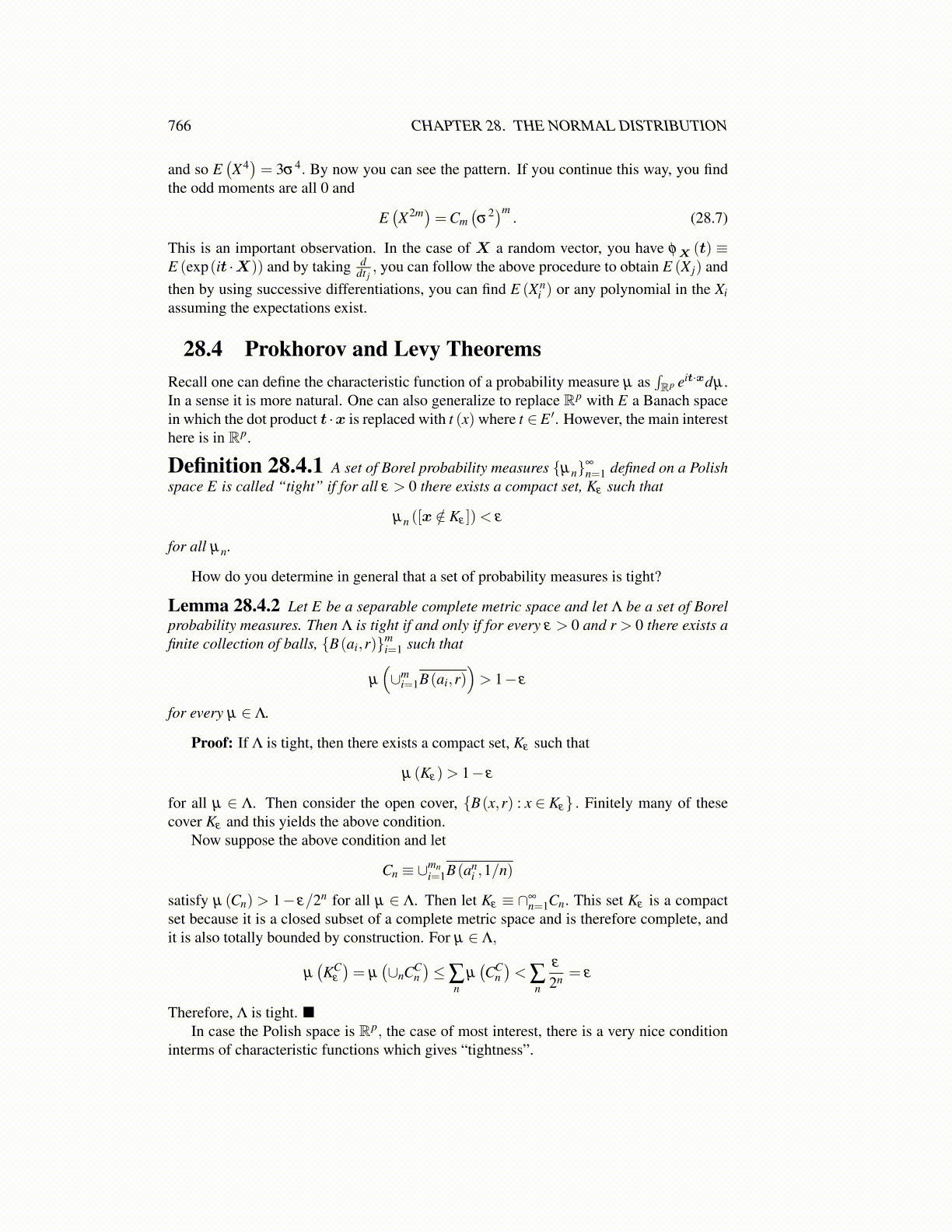
766 CHAPTER 28. THE NORMAL DISTRIBUTION
and so E(X4)= 3σ4. By now you can see the pattern. If you continue this way, you find
the odd moments are all 0 and
E(X2m)=Cm
(σ
2)m. (28.7)
This is an important observation. In the case of X a random vector, you have φX (t) ≡E (exp(it ·X)) and by taking d
dt j, you can follow the above procedure to obtain E (X j) and
then by using successive differentiations, you can find E (Xni ) or any polynomial in the Xi
assuming the expectations exist.
28.4 Prokhorov and Levy TheoremsRecall one can define the characteristic function of a probability measure µ as
∫Rp eit·xdµ .
In a sense it is more natural. One can also generalize to replace Rp with E a Banach spacein which the dot product t ·x is replaced with t (x) where t ∈ E ′. However, the main interesthere is in Rp.
Definition 28.4.1 A set of Borel probability measures {µn}∞
n=1 defined on a Polishspace E is called “tight” if for all ε > 0 there exists a compact set, Kε such that
µn ([x /∈ Kε ])< ε
for all µn.
How do you determine in general that a set of probability measures is tight?
Lemma 28.4.2 Let E be a separable complete metric space and let Λ be a set of Borelprobability measures. Then Λ is tight if and only if for every ε > 0 and r > 0 there exists afinite collection of balls, {B(ai,r)}m
i=1 such that
µ
(∪m
i=1B(ai,r))> 1− ε
for every µ ∈ Λ.
Proof: If Λ is tight, then there exists a compact set, Kε such that
µ (Kε)> 1− ε
for all µ ∈ Λ. Then consider the open cover, {B(x,r) : x ∈ Kε} . Finitely many of thesecover Kε and this yields the above condition.
Now suppose the above condition and let
Cn ≡ ∪mni=1B(an
i ,1/n)
satisfy µ (Cn) > 1− ε/2n for all µ ∈ Λ. Then let Kε ≡ ∩∞n=1Cn. This set Kε is a compact
set because it is a closed subset of a complete metric space and is therefore complete, andit is also totally bounded by construction. For µ ∈ Λ,
µ(KC
ε
)= µ
(∪nCC
n)≤∑
nµ(CC
n)< ∑
n
ε
2n = ε
Therefore, Λ is tight. ■In case the Polish space is Rp, the case of most interest, there is a very nice condition
interms of characteristic functions which gives “tightness”.